The Perfect Order: Chicken Liver Pate | Summer Squash | Berkshire Pork
Sure, when starting any venture—business, family, cult—many would prefer a lovingly restored Victorian home, nuzzled between always-blooming jacarandas and a pint-sized lending library. We want our dream restaurant in a structure that makes people say, “I can’t believe this is a restaurant and not the home of a great person (possibly Tom Hanks) who teaches kids to read.” It’s preferable if the house is as old as possible without triggering the “historical building” designation, which causes all kinds of permitting snafus (your proposal of adding a patio will require approval from all active and former presidents of the historical preservation society and at least two Jesuses).
Or we want the opposite: a hole in the wall that turns us into a Rudy-level inspirational story, people slow-clapping and fighting back single tears with each dish we manage to serve (see Little Lion Cafe or Banh Thai). Or an industrial warehouse whose years as an auto shop or meth lab gives it a “once gritty, now liver-moussed” je nes sais quoi (Juniper and Ivy, Ironside Fish & Oyster).
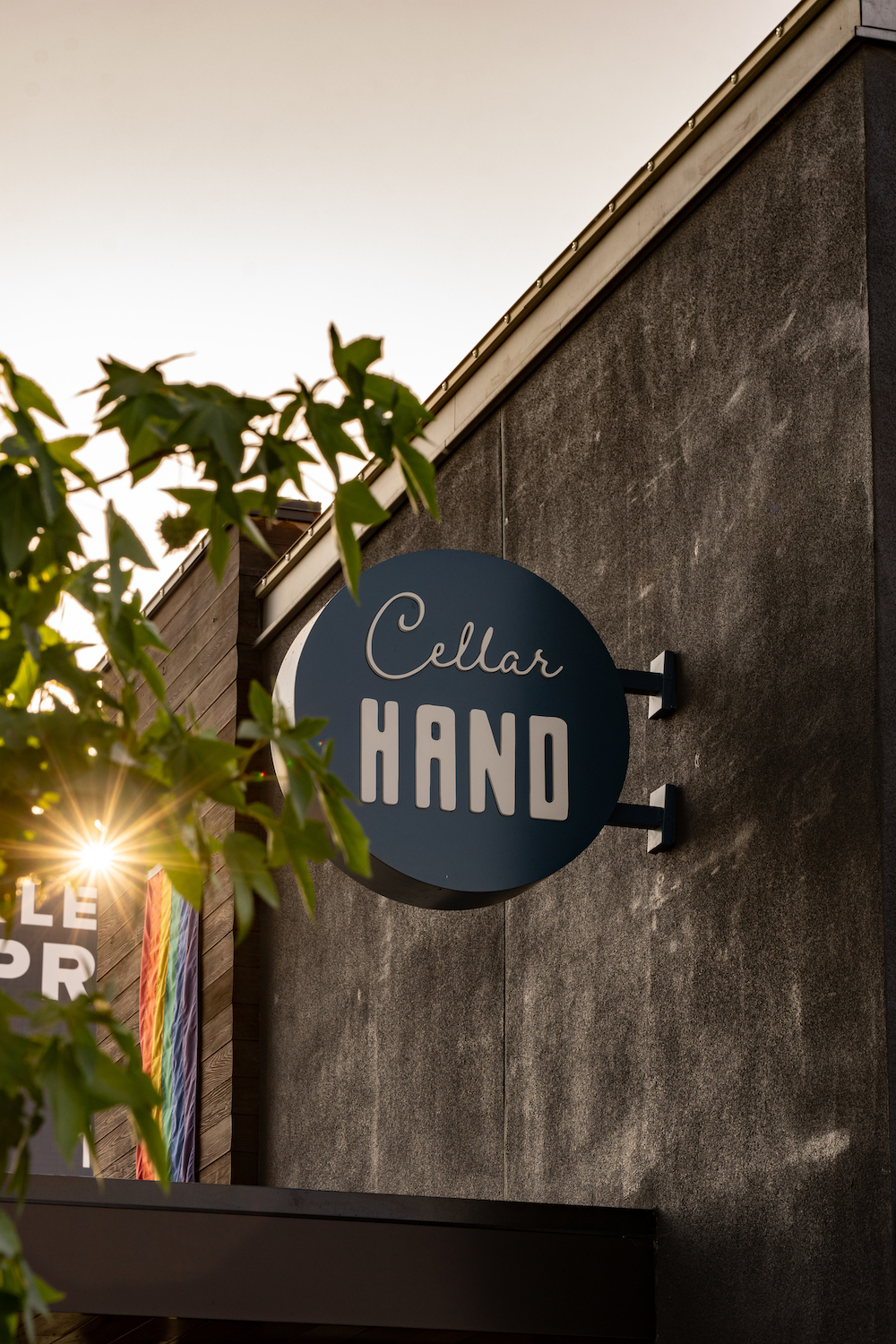
Cellar Hand is the rare spot where you can close your eyes and point at a menu item and still end up happy.
What few of us put on our dream boards is the middle ground—the largely uniform pockets of micro-retail that harbor America’s vital nail salons and burner-phone entrepreneurs. Yet, as commercial space in San Diego becomes scarce and gougey, strip malls are the future and saving grace of our restaurant culture. Fresh out of investor war chests or a strong WhatsApp connection with gods, most of us are going to find a reasonable box and put some oomph into it.
For fans, strip-mall restaurants have a few advantages over those perched on stilts overlooking famed surf breaks, or old barns retrofitted into charcuterie journeys. And that is: For a few months after opening, a strip mall gem will be ours and only ours. The buzz tends to be slow-burn. The first people who discover it will be a more desirable brand of food seekers, immune to the virus of glitz. Less-shiny roads bring better travelers.
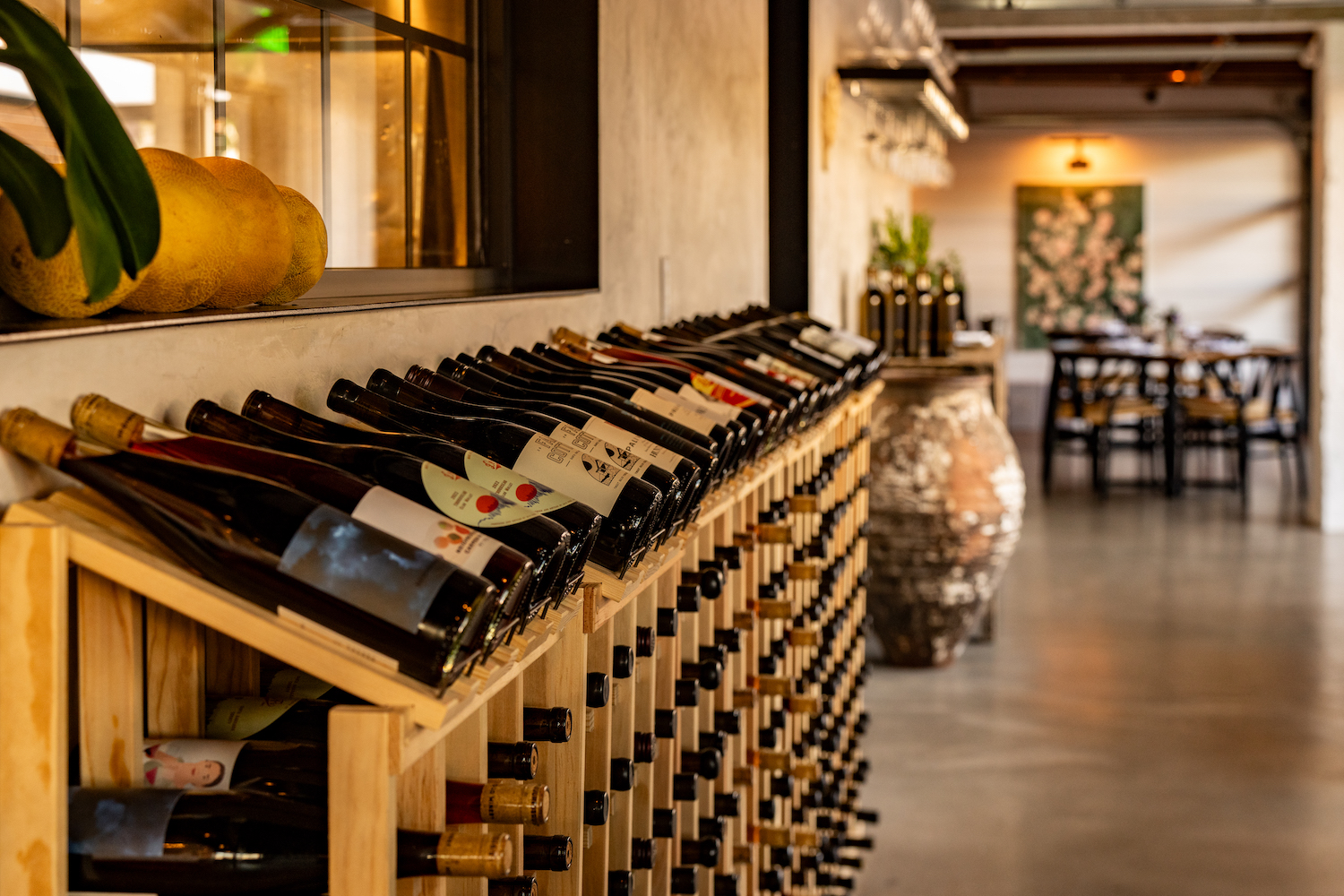
The restaurant is from the family behind Pali Wine Co., which specializes in low-intervention wines from Lompoc.
Though we associate strip malls with Quiznos-tier culinary might, San Diego has a more optimistic history. Convoy District is the paragon. Mira Mesa’s Indian and Middle Eastern food scene, too. There is the mighty Sushi Ota in Pacific Beach and, now, Cellar Hand in Hillcrest.
Adjacent the DMV and across from the 7-Eleven, Cellar Hand is the new concept from family-owned, Lompoc-based Pali Wine Co. and chef Logan Kendall. There is something poetic about a restaurant next to a chiropractor’s office, since the human back is no match for kitchen work.
Cellar Hand is not unsexy. They blew out the walls on this corner of University Avenue, added woods and metal, and cordoned the indoor-outdoor patio experience off from the parking lot with planters.
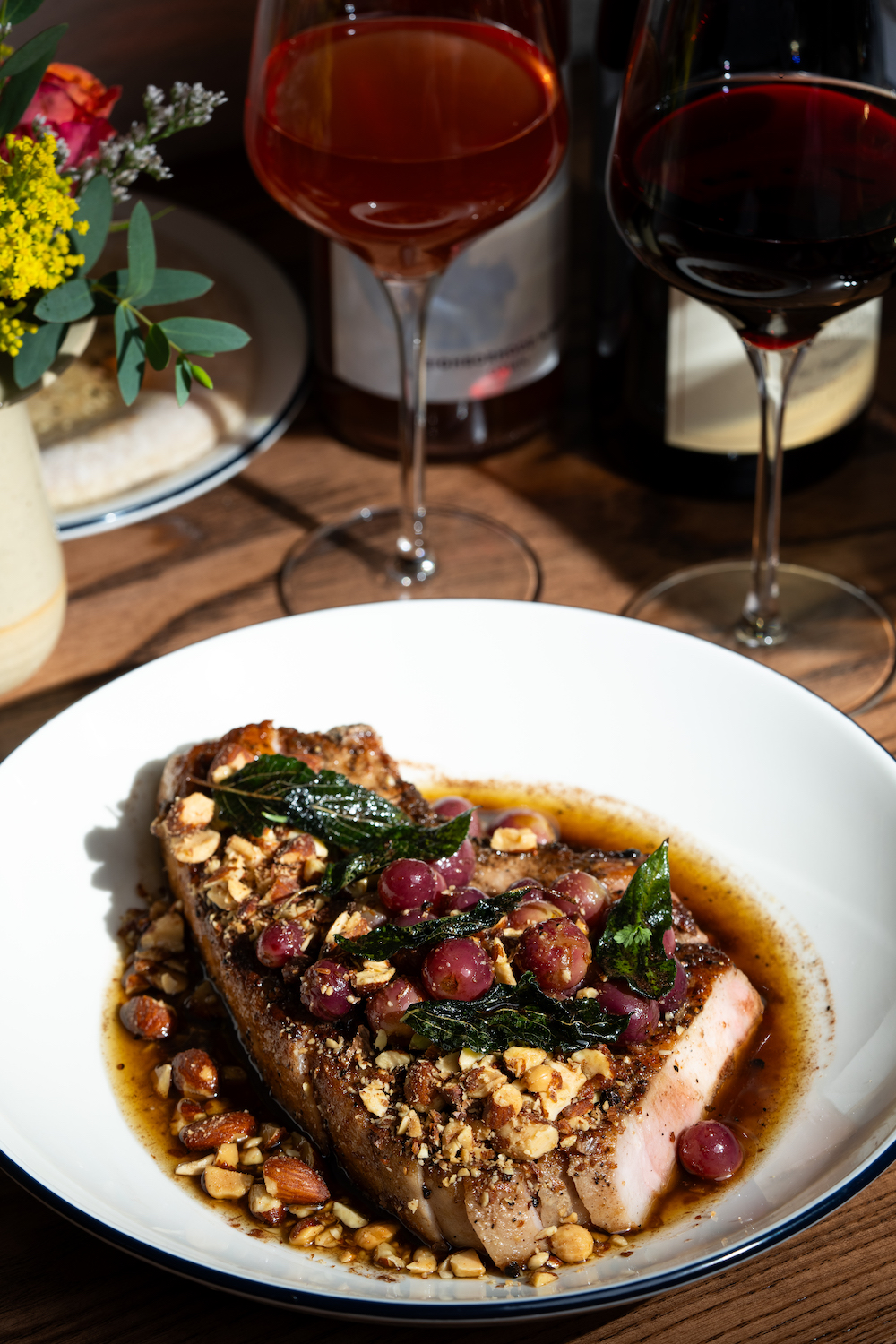
Berkshire pork from the local pasture with huge chef fans: Thompson Heritage Ranch.
As for the food, I haven’t come across something this good since Callie opened. It blew away my expectations, but I’m not shocked—Kendall’s got a deft hand with herby sauces and has been stalking farmers and local boats and bakers in San Diego for a good while now. Though people go to Pali’s first tasting room in Little Italy for low-intervention wines, his small, simple bites there were always better than they needed to be.
But Cellar Hand is something more. And that more is ingredients. At this point the “farm-to-table” movement has been co-opted, mocked, pantsed, and wet-willied. I often wonder if some of the restaurants claiming “farm” think the back of every commercial-food semi truck is filled with a biodynamic greenhouse tilled by Wendell Berry.
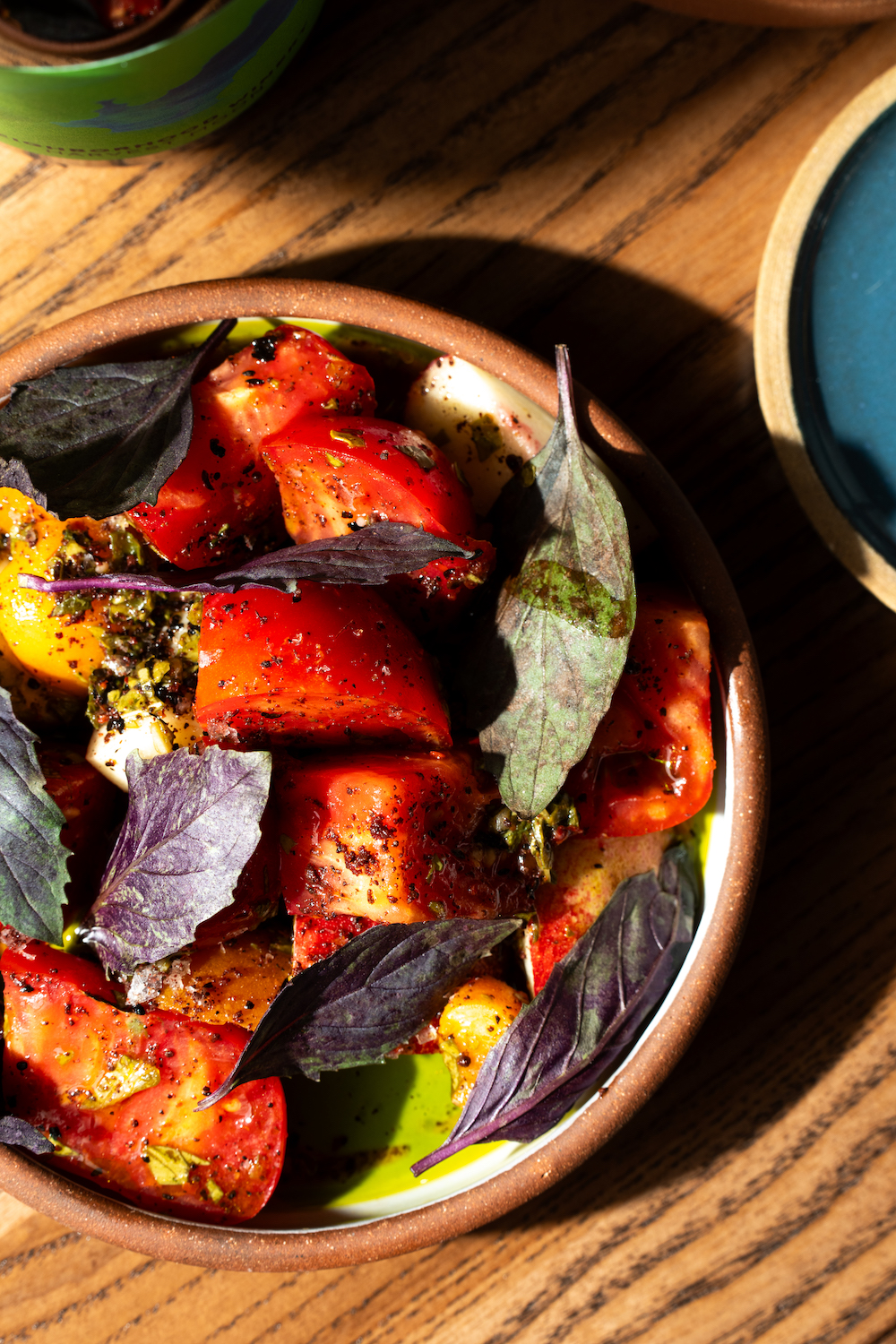
These tomatoes taste like tomatoes, not red-flavored water.
But I’ve been around this food scene long enough to know that most of Kendall’s friends smell like vines and hot soil. He shadows them, riding around in their ATVs, and they reward his loitering. Sure, he and sous chef Ashley McBrady are cooking at Cellar Hand. But they mostly get the best damn ingredients you’re going to find—the apple you ate off a tree that blew your mind, the tomato you grew that tasted like every “tomato” before was a sham—and build them an A-list supporting cast.
It’s farm-to-table as an extreme sport or benevolent obsession, possibly a reaction to all the half-assing and straight-up fraud. The apex of this movement was when Alice Waters served a single raw peach as a dessert at Chez Panisse. Esoteric, sure. And I’d be a little pissed if I ponied up Panisse money to be offered a piece of fruit. But her point was made: When you start with food grown in healthy soil, picked ripe in the season it was supposed to be picked in, its base charms are pretty incredible. If we look at a great dish as a 100-yard dash, using the best ingredients is like beginning that race on the 60-yard line.
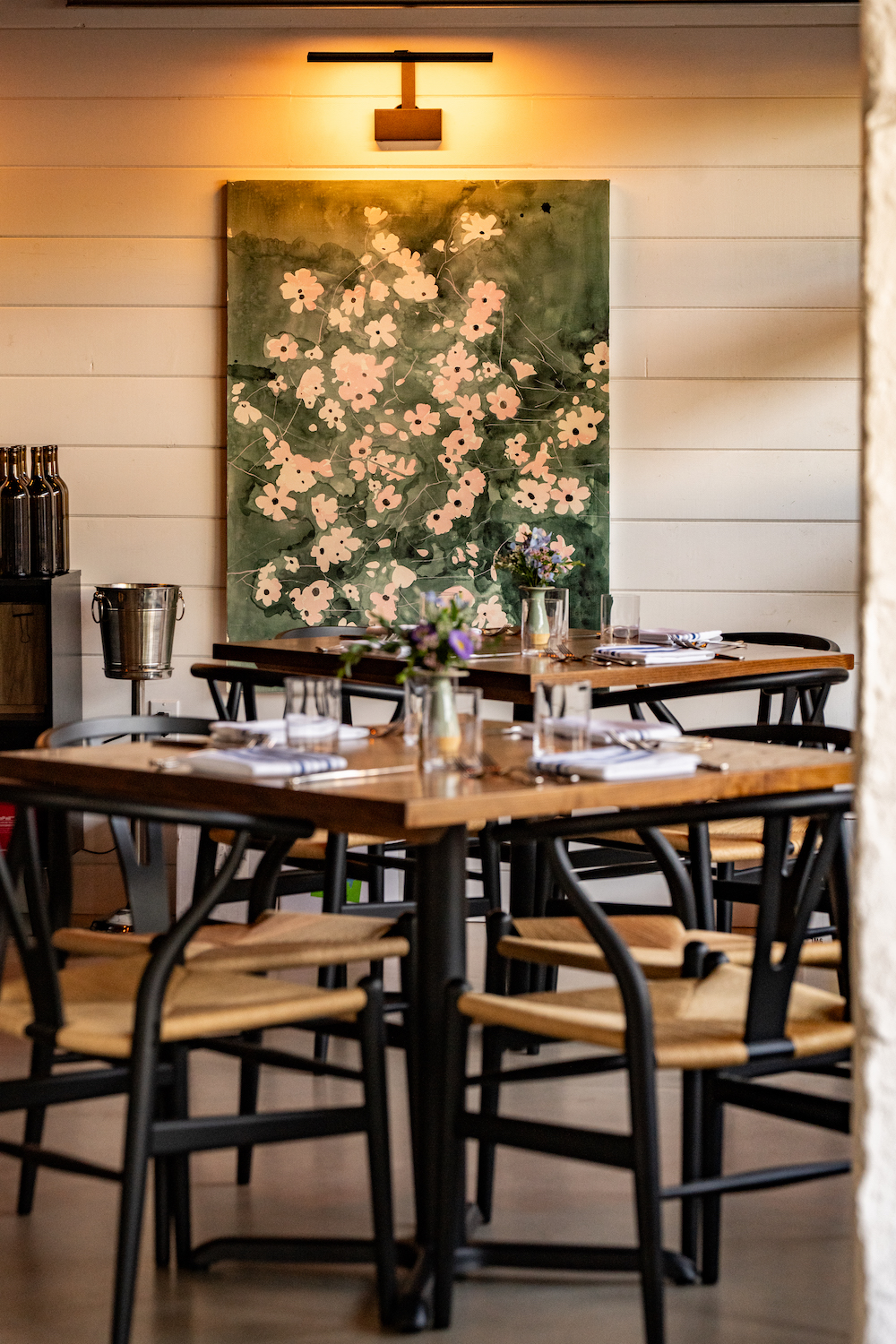
Next-level strip mall restaurants are the future as space in San Diego gets rarer.
Start a meal at Cellar Hand with the bluefin nduja toast. Instead of cured pork, it’s cubes of raw bluefin caught in San Diego, tossed in nduja spices (usually sweet smoked paprika and Calabrian chiles), white soy, and Meyer lemon. A hillock of it comes piled on charred housemade toast with dill aioli and local chives.
From the dipping section of the menu, get the baba ganoush, eggplants from Chino and D’Acquisto Farms charred in the pita oven then blended with tahini and spiked with Meyer lemon. It’s the lemon balm harissa— pulverized with arugula and cilantro (Hukama Produce), then topped with pomegranate seeds and dukkah (toasted sesame, cumin, and smoky coriander)—that sets it off. The whipped tahini is decent, but high acid bullies the seedy, nutty depth—although the warm, airy, house-fermented and wood-fired pita makes anything taste better.
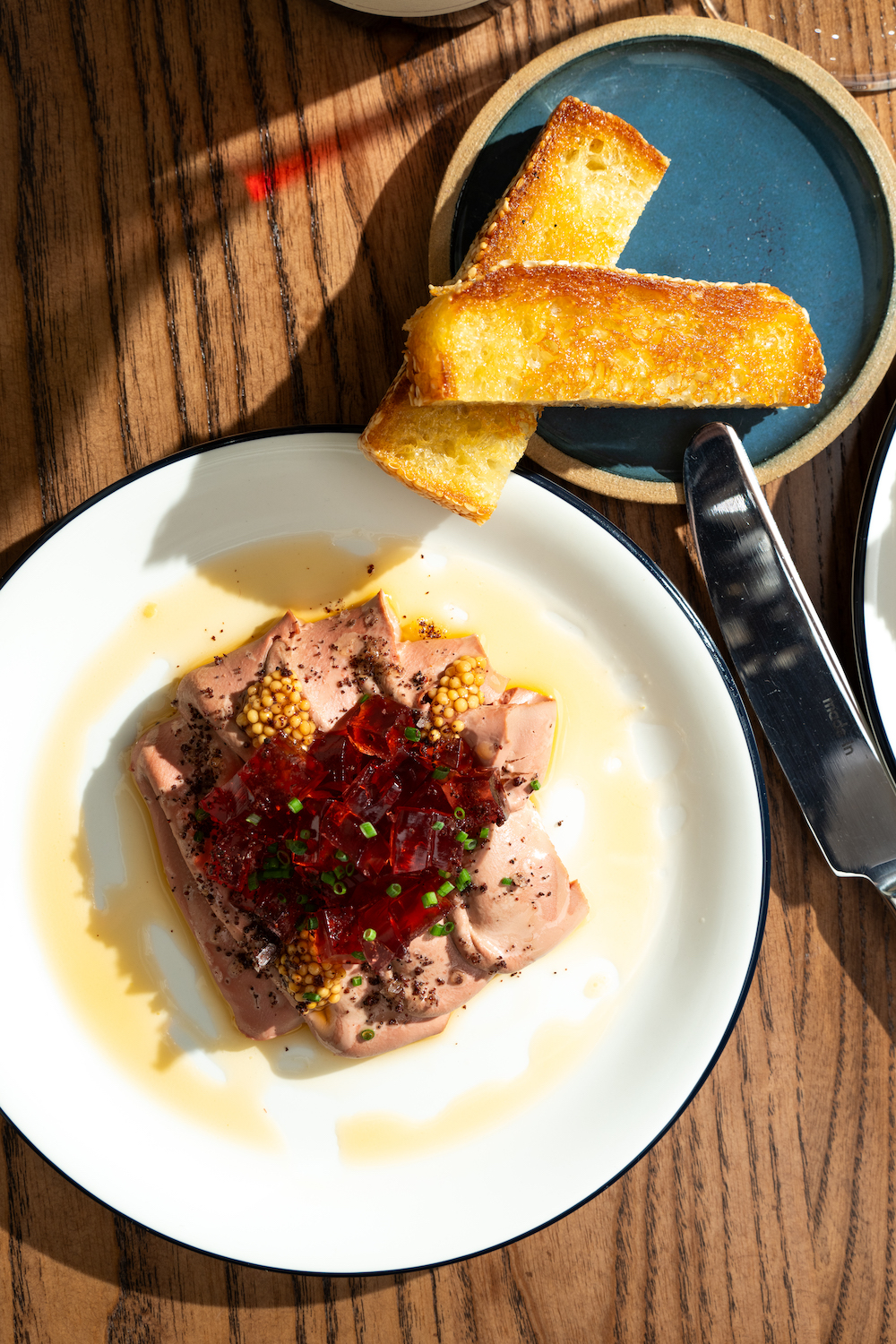
Chicken liver pate with orange wine Jell-O shots on brown butter toast.
The chicken liver pate looks like a frat trick: a fluffy, creamy pile of mousse topped with Jell-O shots. Hillcrest has a formidable and enduring Jell-O shot tradition, so this feels like a sign of respect—except these ’80s jiggle-party cubes are made of Pali’s orange wine (a tannic white that gets its Cointreau-bottle hue from resting the wine with skins). Put on sesame bread cooked in brown butter and topped with sumac and local grapefruit oil, it’s a fairly incredible, Gatsbian bite.
Kendall and McBrady’s favorite thing seems to be Simon & Garfunkeling local dirt candy. Farm duets. The tomato dish pairs D’Acquisto tomatoes with R&L Farms stone fruit (white peaches and plums).
They’re dressed in a simple, intoxicant sauce made of arugula and fermented red wine and garnished with Chino Farm radish greens and salt.
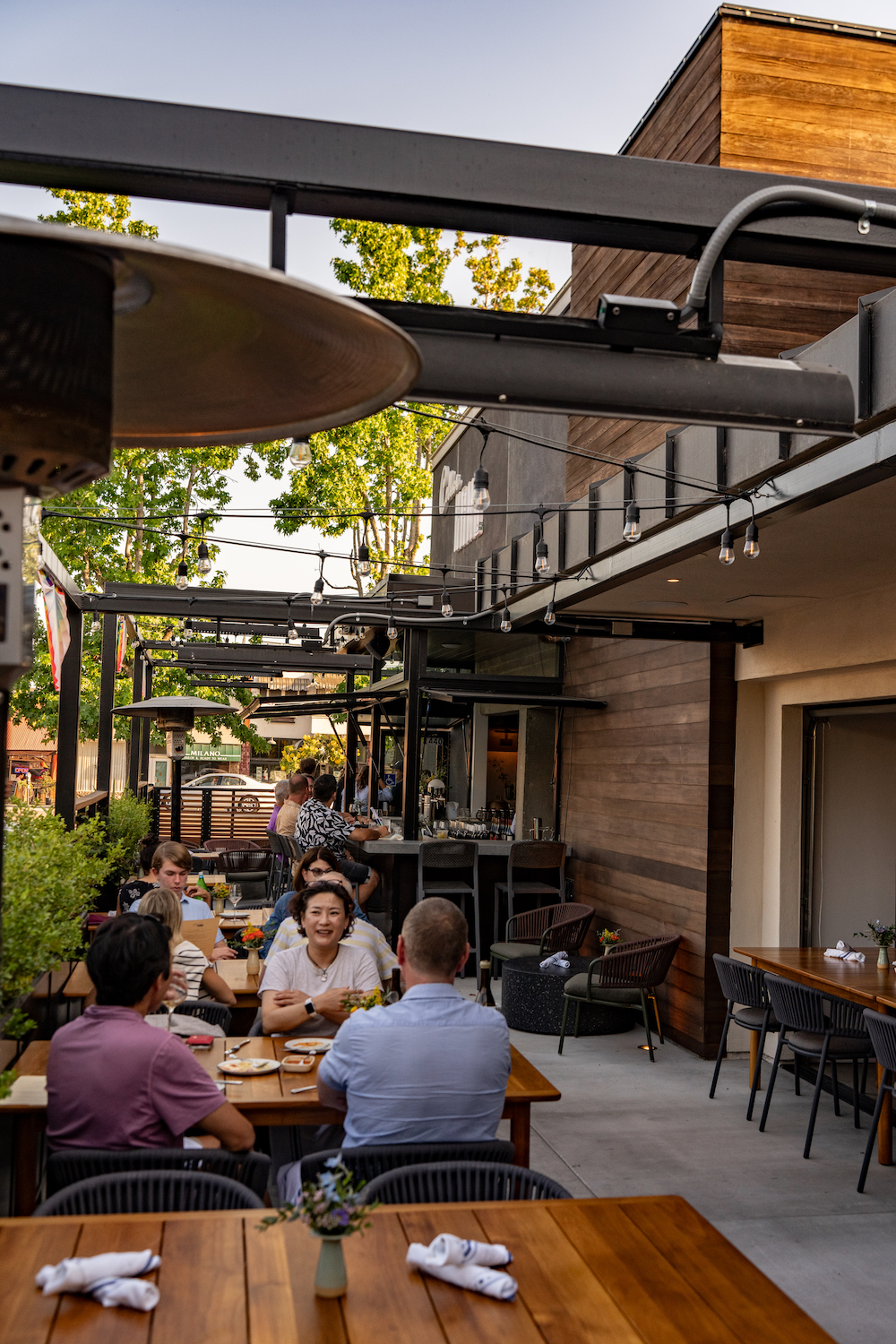
To the left of those hedges are a couple of Hondas, but you’d never know it.
For the phenomenal melon dish, they use Weiser Family Farms’ Rocky Sweet melons, JR Organics’ watermelon, and Chino Farm cucumbers (compressed with lemon juice and cinnamon basil). It’s tossed in urfa biber (a complex, moody Turkish chile that’s got a hint of dark raisin and gives the dish a rarely tasted flavor profile). They ferment cantaloupe in salt and Beylik Family Farms chiles, blend it into a gel-like kosho, and drizzle it atop the whole deal, then add Bulgarian feta and melon seeds they dehydrate and puff. The star is the cool, sweetened lemon-basil broth at the bottom (left over from compressing the cukes).
The Chino Farm squash is a meal in itself: trimmed and vacuum-sealed with dill, then charred with balm harissa and fattened up with herbed ricotta made from Thompson Heritage Ranch milk. The team makes their own za’atar (thyme, sesame, urfa biber, aleppo, sumac), then pours hot oil over it for a riff on salsa macha.
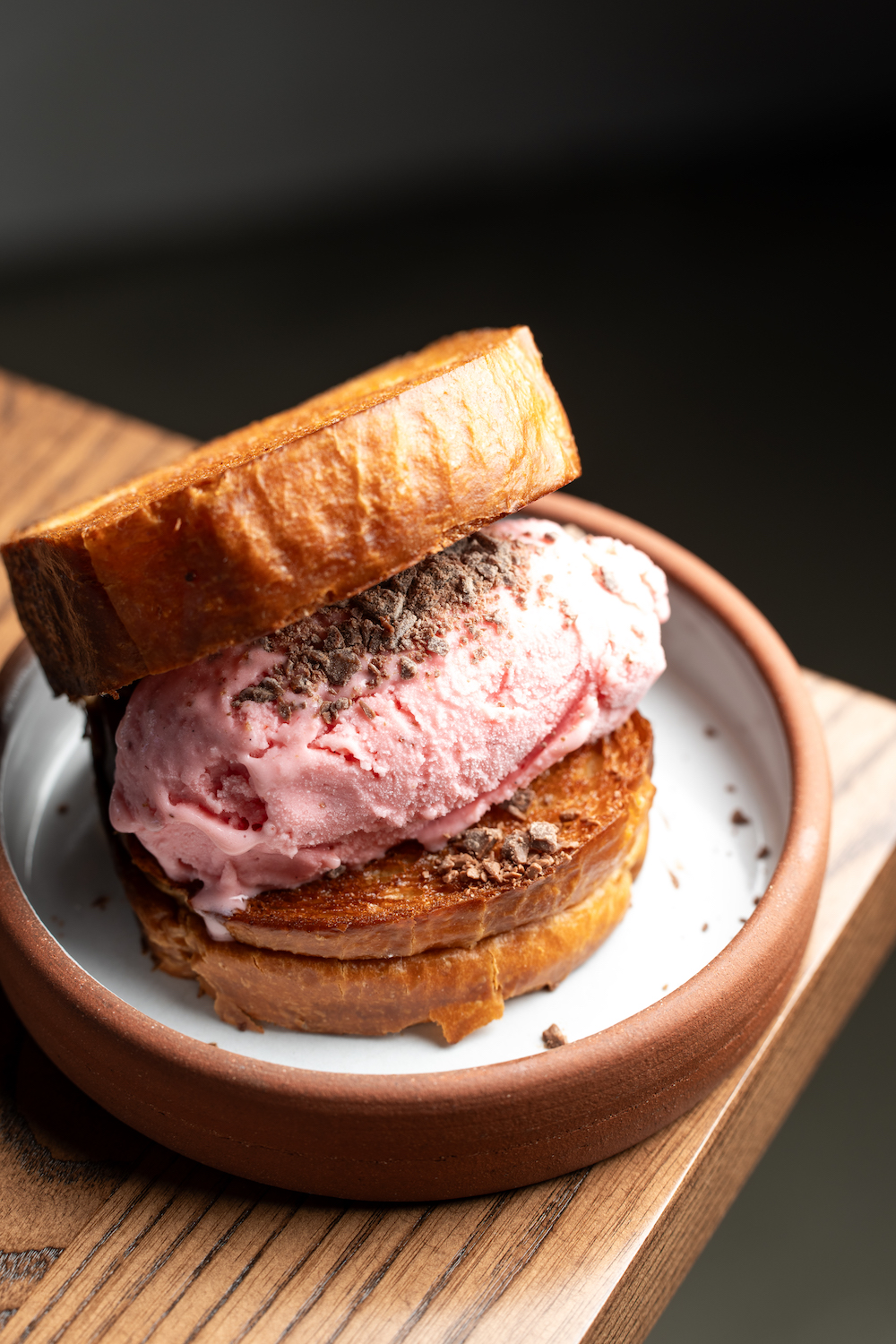
For dessert, an ice cream sandwich with brown butter toast and a scoop from Chino Farm’s new creamery, Aisu.
I try two entrees, one hit and one miss. The miss is the whole local rockfish, which gets overwhelmed in a too-acidic housemade labneh. The hit is the Berkshire pork—from the rapidly chef-famous Thompson Heritage Ranch in Ramona—that is simply seared in its own fat, basted in brown butter and pineapple sage, deglazed in Pali’s Tower 15 “Swell” wine (a mix of Bordeaux reds), and garnished with candy grapes from R&L Farms, toasted almonds, and jus. This pork redefines the genre.
PARTNER CONTENT
It makes sense that winemakers would go this obsessive about peak agriculture—especially in San Diego, with its obscenely fertile soils (Waters would come to Chino Farm in Rancho Santa Fe for her produce), nearly year-round growing climate, and the most small farms per capita of any county in the US. Our produce is land caviar. Not all restaurant operators can afford to use it this extensively, and there’s no shame in that. But Kendall and McBrady get to, and they do it with just the right balance of tweak and restraint.
You don’t fingerpaint on Picassos.
















